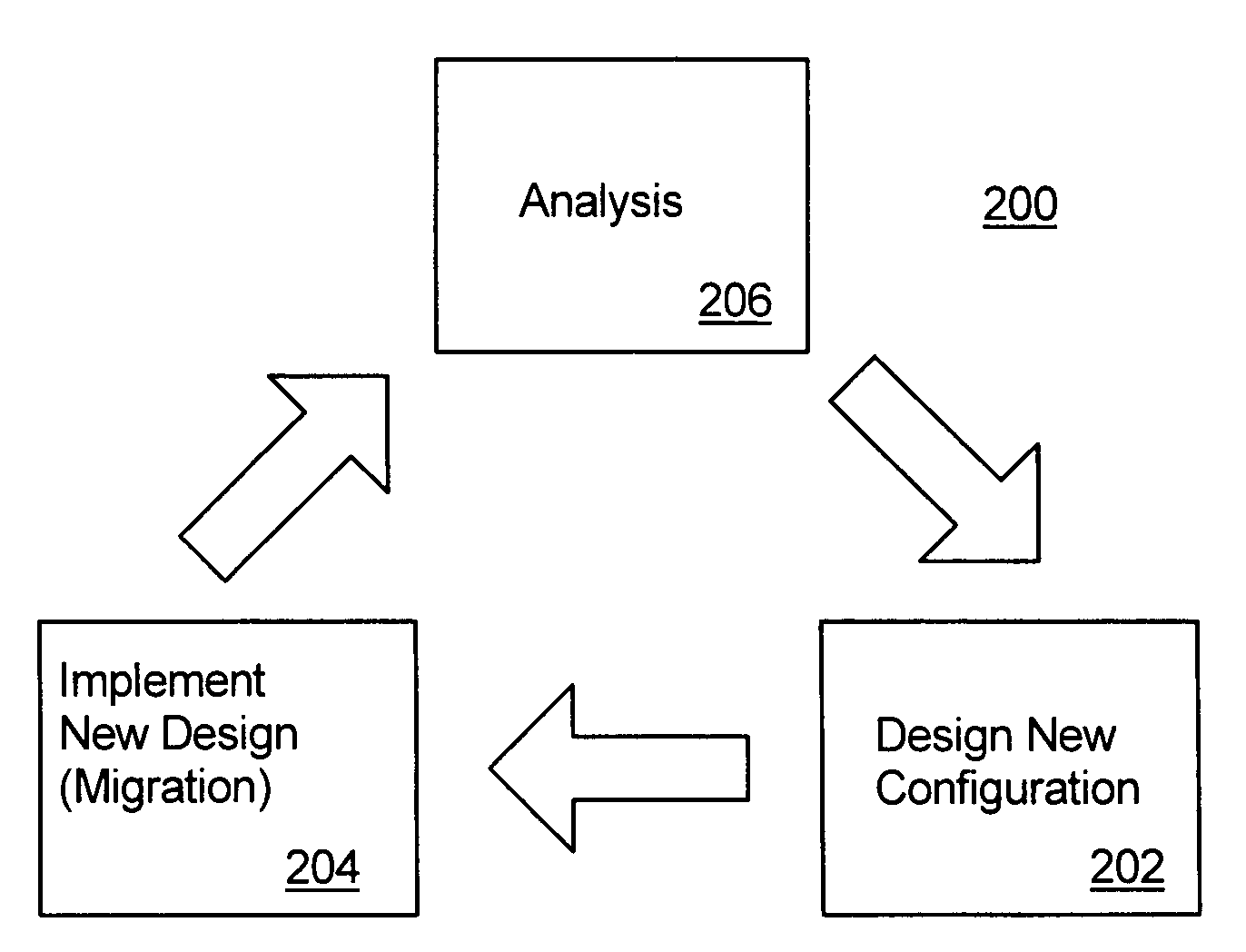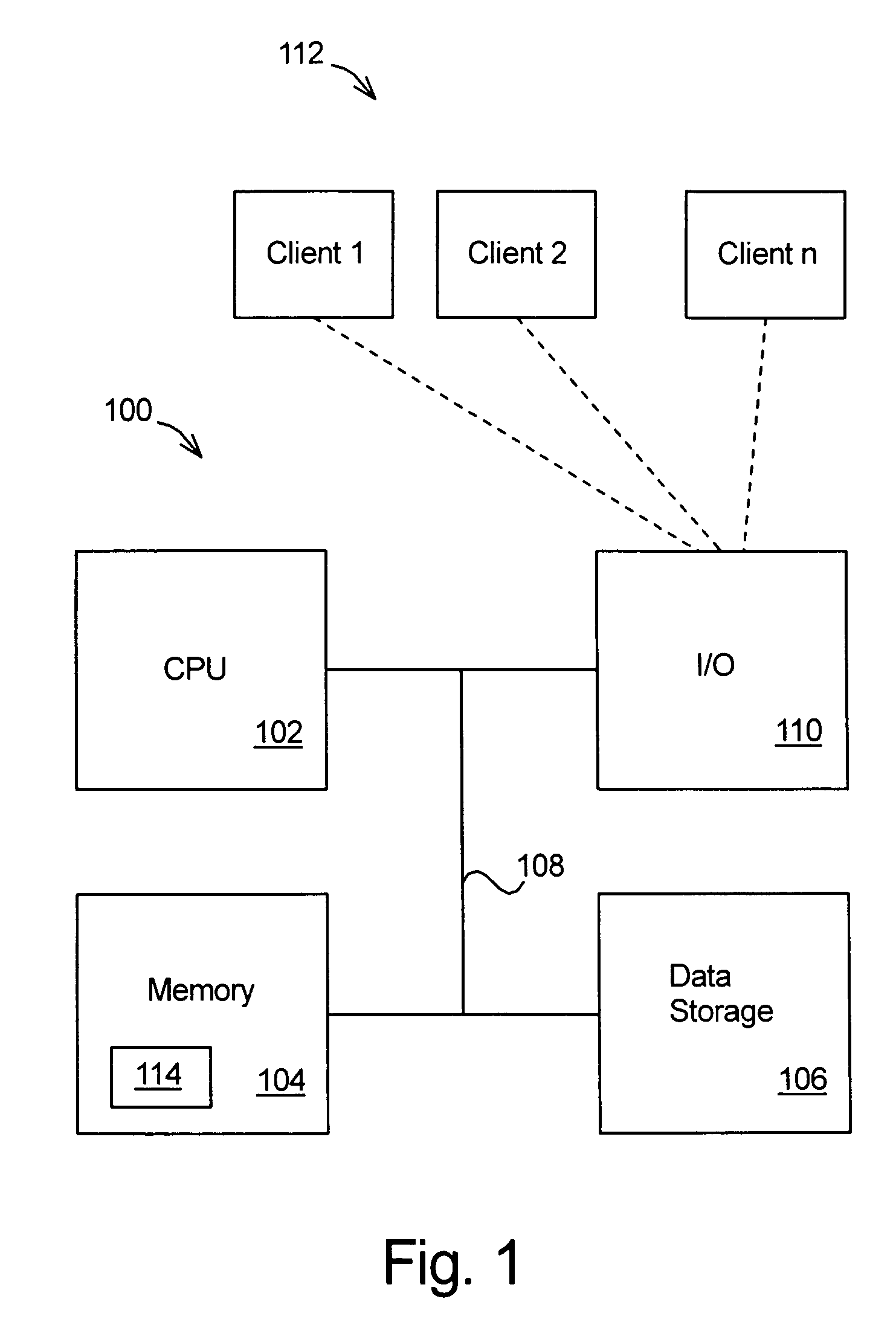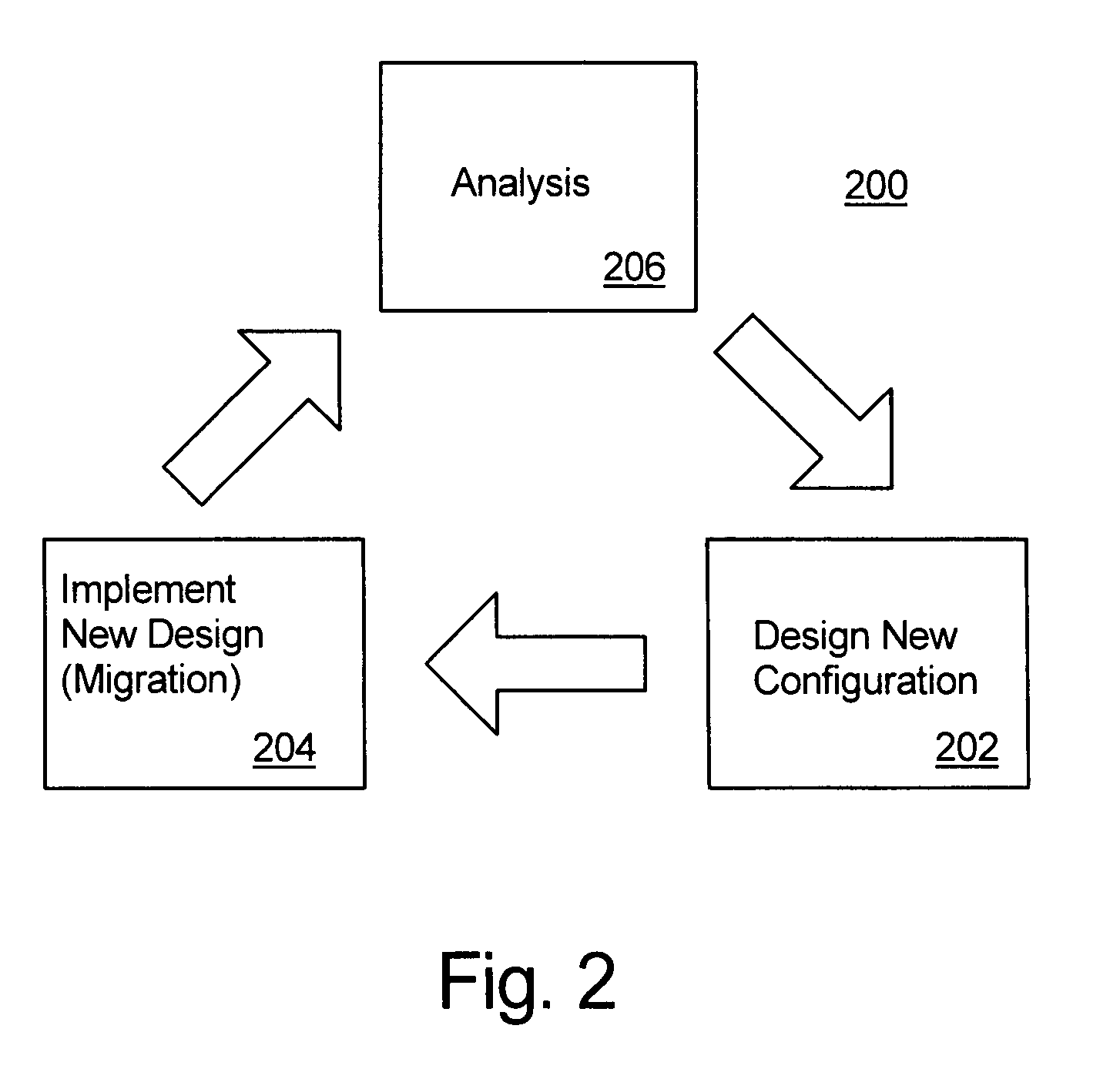Automated system adaptation technique particularly for data storage systems
a data storage system and automatic system adaptation technology, applied in the field of data storage system design, configuration and maintenance, can solve the problems of large-scale computer data storage system with many disk arrays, difficult to design, configure and manage, and shortage of skilled administrators of such systems
- Summary
- Abstract
- Description
- Claims
- Application Information
AI Technical Summary
Benefits of technology
Problems solved by technology
Method used
Image
Examples
Embodiment Construction
1. OVERVIEW
[0025]FIG. 1 illustrates a block schematic diagram of a computer system 100 by which the present invention may be implemented. The computer system 100 may include a general-purpose processor 102, memory 104 (e.g., RAM and / or hard disks), data storage 106 (e.g., including one or more disk arrays), a communication bus 108, and input / output devices 110, such as a keyboard, monitor, mouse and network interface. The computer system 100 is conventional. As such, it will be apparent that the system 100 may include more or fewer elements than shown in FIG. 1 and that other elements may be substituted for those illustrated in FIG. 1.
[0026]The computer system 100 may function as a data storage system. Accordingly, the system 100 may store data generated by a number of networked clients systems (e.g., workstations) 112. The data may be stored, for example, in the data storage 106. One or more software programs 114 for implementing aspects of the present invention may be stored in th...
PUM
 Login to View More
Login to View More Abstract
Description
Claims
Application Information
 Login to View More
Login to View More - R&D
- Intellectual Property
- Life Sciences
- Materials
- Tech Scout
- Unparalleled Data Quality
- Higher Quality Content
- 60% Fewer Hallucinations
Browse by: Latest US Patents, China's latest patents, Technical Efficacy Thesaurus, Application Domain, Technology Topic, Popular Technical Reports.
© 2025 PatSnap. All rights reserved.Legal|Privacy policy|Modern Slavery Act Transparency Statement|Sitemap|About US| Contact US: help@patsnap.com



